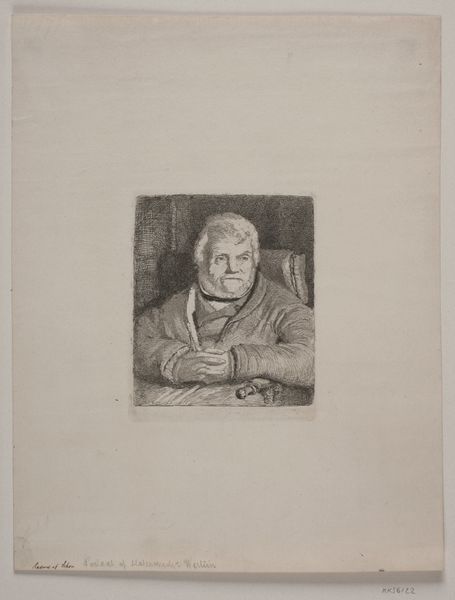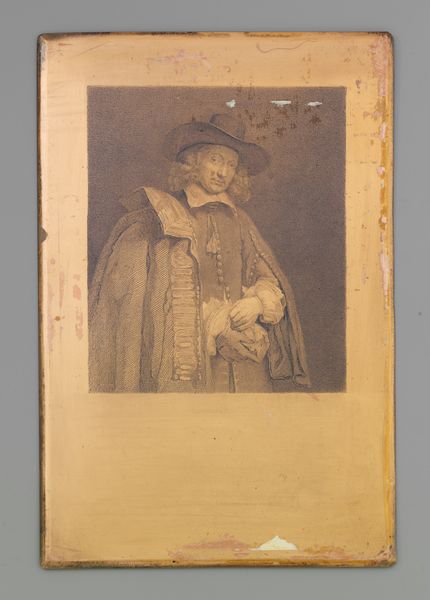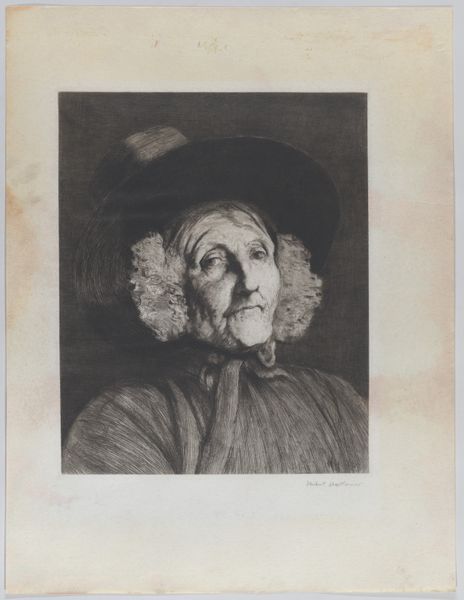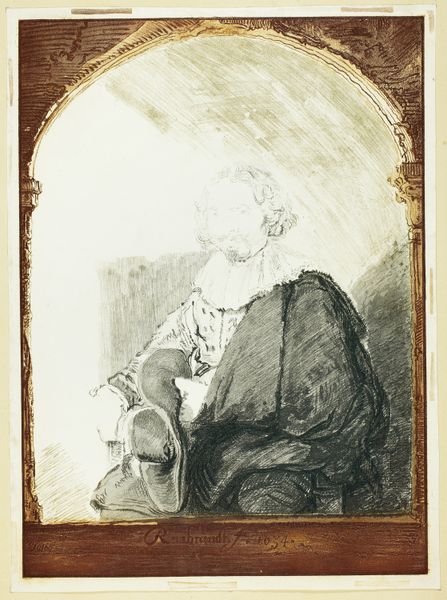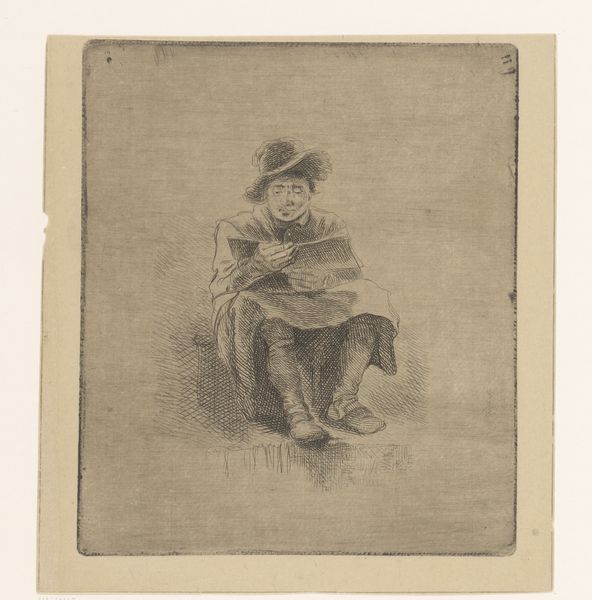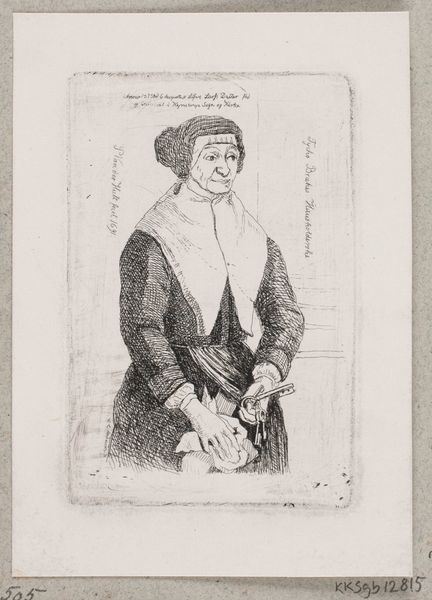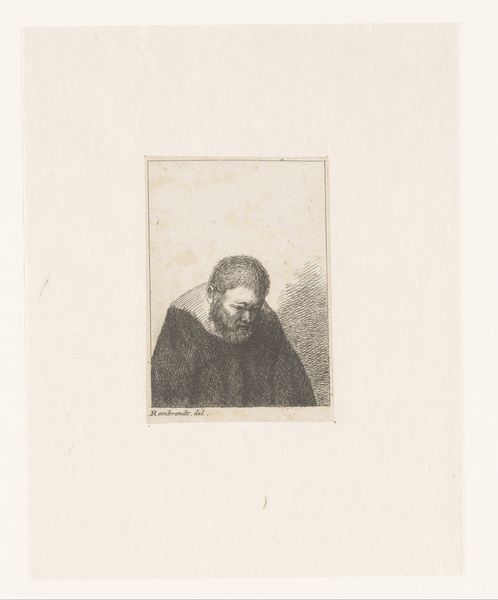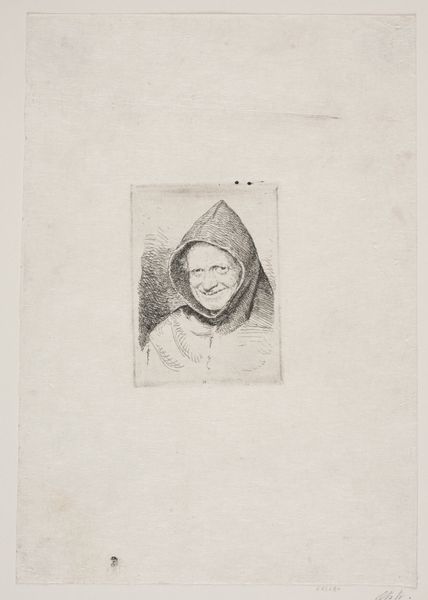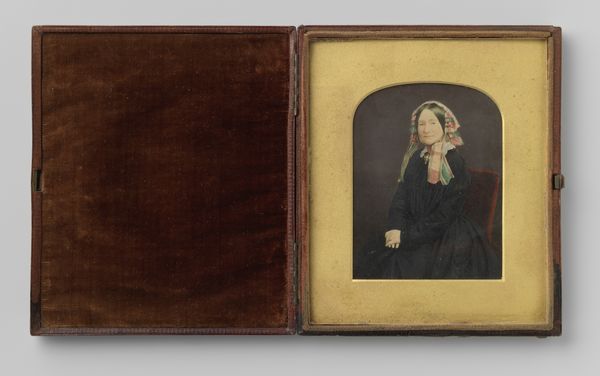
#
aged paper
#
toned paper
#
water colours
#
sketch book
#
personal sketchbook
#
coloured pencil
#
underpainting
#
watercolour bleed
#
watercolour illustration
#
watercolor
Dimensions: height 260 mm, width 170 mm
Copyright: Rijks Museum: Open Domain
This is ‘Portret van een dame’, made by Johann Wilhelm Kaiser in the nineteenth century using the technique of etching, a printmaking process that relies on corrosive action. Notice the tonality, achieved by repeatedly immersing the plate in acid, allowing for careful control of the shadows and highlights. Look closely and you'll observe how the etching technique lends itself to fine, detailed work, capturing the texture of the sitter’s clothing and the subtle nuances of her expression. The etched lines create a sense of depth and volume, while also imbuing the portrait with a unique graphic quality. Etching was embraced by artists during this period for its capacity to reproduce images quickly and relatively inexpensively. This portrait reflects the increasing democratization of art, making it accessible to a broader audience beyond the elite circles of society. So next time you look at a print like this, consider the skilled labor involved, and the way that this production process opened new possibilities for artistic expression and dissemination.
Comments
No comments
Be the first to comment and join the conversation on the ultimate creative platform.
